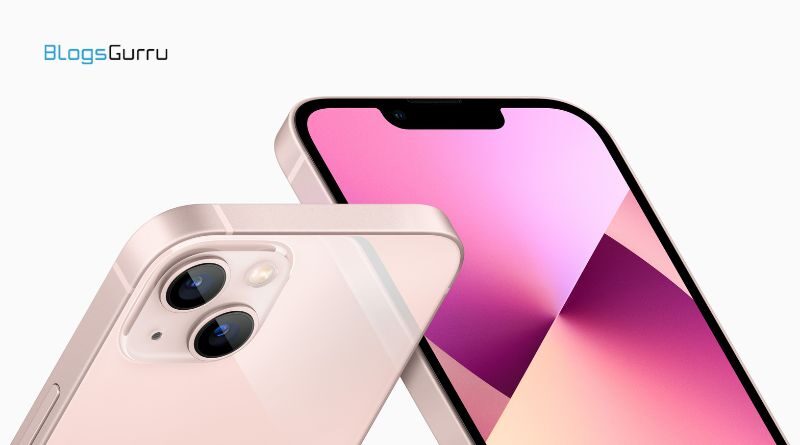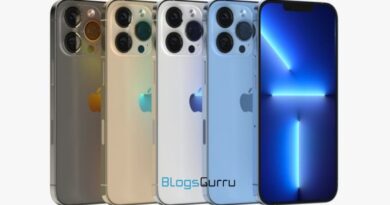The iPhone 13 and iPhone 13 mini are Apple’s mid-tier flagship iPhones
The iPhone 14 and iPhone 14 Plus, which were unveiled on September 14, 2021, succeeded the iPhone 13 and iPhone 13 mini. The iPhone 13 and iPhone 13 mini remain Apple’s low-cost smartphone alternatives, with prices beginning at $599. The 6.1-inch iPhone 13 replaces the iPhone 12 and the 5.4-inch iPhone 13 small replaces the iPhone 12 tiny.
With flat sides, an aerospace-grade aluminum casing, a glass back, and a tiny increase in thickness, both of the new iPhone 13 models are almost similar in appearance to the iPhone 12 models (7.65mm). Pink, Blue, Midnight (black), Starlight (silver/gold), (PRODUCT)RED, and Green are the available colors for the iPhone 13 models.
The iPhone 13 and iPhone 13 mini
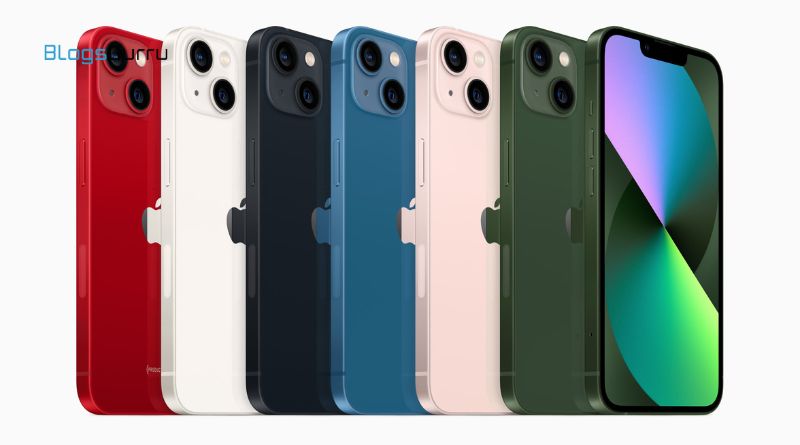
Super Retina XDR Displays on each of the latest models are 28% brighter. The iPhone 13 small has a resolution of 2340×1080 and a pixel density of 476 pixels per inch, whereas the iPhone 13 has a resolution of 2532×1170 and a pixel density of 460. Both iPhones have a maximum brightness of 1200 nits for HDR, True Tone to adjust the display’s color temperature to the surrounding light, Wide Color for vibrant, rich colors, and Haptic Touch for feedback.
The Face ID notch has shrunk, taking up less overall area, and the front-facing TrueDepth camera technology has been improved. The iPhone 13 and 13 mini, like last year’s models, include a Ceramic Shield cover glass that is embedded with nano-ceramic crystals for improved drop protection. The latest iPhones have IP68 water and dust resistance and can withstand immersion in 6 meters of water for up to 30 minutes.
Also Read: Tesla Phone Pi : price, release date, and everything we know
The latest iPhones are powered by an improved A15 Bionic Chip. It has a 4-core GPU (one fewer GPU core than the Pro versions), a 6-core CPU with 2 performance cores and 4 efficiency cores, and a 16-core Neural Engine. With 12-megapixel Wide and Ultra Wide cameras, the new diagonal dual-lens back camera is available. The Ultra Wide camera has an upgraded f/2.4 aperture for better low-light performance, while the Wide camera has an improved f/1.6 aperture that allows in 47% more light and Sensor-Shift Stabilization.
The iPhone 13 models include Cinematic Mode, a function that employs rack focus to fluidly change focus from one subject to another, elegantly blurring the backdrop and producing movie-quality depth effects, to their normal Portrait Mode, Night Mode, Time-Lapse, and other photography features. The iPhone camera app may be used to change the blur and depth of focus while shooting in cinematic mode, which uses Dolby HDR. The iPhone 13 models can also capture 4K video at up to 60 frames per second.
In addition, Deep Fusion, a carryover feature from the iPhone 12, activates in mid to low-light situations to highlight texture and detail. Smart HDR 4 can identify up to four persons in a shot and adjust contrast, lighting, and skin tones for each of them. A more advanced kind of filter called a photographic style selectively mutes colors or boosts vividness without changing skin tones. To customize and fine-tune, there are Tone and Warmth settings as well as Vibrant, Rich Contrast, Warm, and Cool choices.
The Face ID facial recognition technology, which works with the 12-megapixel front-facing camera and supports Smart HDR 4, Deep Fusion, Night Mode, Cinematic Mode, Night Mode Selfies, and other features, may unlock Apple’s iPhone 13 and 13 mini. The inclusion of a 5G connection allows for higher-quality video streaming, clearer FaceTime chats, and enhanced gaming, although the super-fast mmWave speeds are once again restricted to the country’s largest cities.
Also Read: iPhone Replacement and Repair – Top Experts At Your Service
Additional rural locations in the United States and other nations may get slower sub-6GHz 5G speeds, and more 5G bands are supported to provide 5G coverage everywhere. The iPhone 13 and 13 mini contain a U1 Ultra Wideband processor for spatial awareness in addition to Wi-Fi 6 and Bluetooth 5.0 capabilities. When 5G isn’t available, Gigabit LTE is enabled, and a Smart Data Mode switches back to an LTE connection while 5G speeds aren’t required to conserve battery life when utilizing 5G. The latest iPhone 13 models have a nano-SIM slot but allow dual eSIM and don’t ship with a physical SIM card by default.
Larger batteries and the more efficient A15 processor have both contributed to a considerable increase in battery life. The battery life of the iPhone 13 mini is up to 1.5 hours longer than that of the iPhone 12 mini, while the iPhone 13 is up to 2.5 hours longer than the iPhone 12. Storage capacity ranges from 128GB on the low end to 512GB on the high end. A three-axis gyroscope, an accelerometer, a proximity sensor, an ambient light sensor, and a barometer are all inbuilt.
The iPhone 13 and iPhone 13 mini include built-in magnets and are compatible with MagSafe accessories, as did last year’s iPhones. They can be charged at up to 15W using Apple’s MagSafe Charger. The iPhone also features rapid charging, which uses a 20W power adaptor to offer a 50% charge in 30 minutes. The iPhone 13 and 13 mini do not come with a power adaptor or earbuds; these items must be bought separately. For charging, they do come with a USB-C to Lightning connection.
Pricing and Availability
The iPhone 13 small now has a starting price of $599, while the iPhone 13 has a starting price of $699. The iPhone 13 versions are available via carriers, third-party retail shops, carriers’ websites, Apple’s online store, and Apple retail stores. As of January 2023, Apple is also supplying reconditioned iPhone 13 devices in several regions.
Reviews
The quicker A15 processor, longer battery life, and updated cameras all contributed to the excellent reviews of the iPhone 13, but other people saw it as essentially an incremental update that didn’t provide enough new features to warrant an upgrade from an iPhone 12. According to real-world testing, Dieter Bohn of The Verge claimed this year’s battery life is “outstanding”.
Although the smaller iPhone 13 mini has improved, Engadget noted that it is “still shorter than the usual smartphone.” Bohn praised the iPhone 13’s camera, saying that “details are sharp and accurate, colors are rich without being oversaturated, focusing is fast and reliable, portrait mode is good enough to use every day, and low light and night sight are both exceptional.”
Also Read: Apple iPhone 14 Max could be in short supply at launch
However, Joanna Stern of The Wall Street Journal writes that while the camera improvements are welcome, they alone are not enough to persuade an iPhone 12 user to upgrade. According to CNET, the iPhone 13 will be a dependable alternative for the majority of consumers because of its strong performance and battery life. Visit our review roundup or selection of unboxing videos for further comments on the iPhone 13 mini and iPhone 13.
Design
In favor of a flat-sided design with squared-off corners, which harkens back to the iPhone 4 and 5 and matches the iPad Pro, Apple ditched the rounded edges that had been present on iPhones since the iPhone 6 with the release of the iPhone 12. The iPhone 13 models essentially have the same body shape as the iPhone 12 models they are replacing, and Apple is employing the same flat-edged aesthetic throughout the whole iPhone 13 series.
Both the front and the rear are made entirely of glass and are enclosed in an aluminum frame that matches the color of the glass. The TrueDepth camera, speaker, and microphone are all housed in a notch on the iPhone 13’s front display. This year’s notch is narrower, allowing for a larger display area overall. Along with the power button on the right and the volume/silence buttons on the left, the phone also has a set of antenna bands on the top and sides.
Also Read: 5 Best Apps to Download Music for Free on Android
A 5G mmWave antenna is located below the power button, however it will only be present on iPhone models that are sold in the United States. The iPhone 13 models essentially have the same body shape as the iPhone 12 models they are replacing, and Apple is employing the same flat-edged aesthetic throughout the whole iPhone 13 series. Both the front and the rear are made entirely of glass and are enclosed in an aluminum frame that matches the color of the glass.
Sizes
The TrueDepth camera, speaker, and microphone are all housed in a notch on the iPhone 13’s front display. This year’s notch is narrower, allowing for a larger display area overall. Along with the power button on the right and the volume/silence buttons on the left, the phone also has a set of antenna bands on the top and sides. A 5G mmWave antenna is located below the power button, however, it will only be present on iPhone models that are sold in the United States.
The iPhone 13 and 13 mini are heavier and thicker than the iPhone 12 range. Compared to the iPhone 13, which is 5.78 inches tall (146.7mm), 2.82 inches wide (71.5mm), and 0.30 inches thick (7.65mm), the iPhone 13 small is 5.18 inches tall (131.5mm), 2.53 inches wide (64.2mm), and 0.30 inches thick (7.65mm) (7.65). At 4.97 ounces (141 grams), the small is the lightest phone in the iPhone 13 series, followed by the iPhone 13 at 6.14 ounces (174 grams).
Colors
Since a few years ago, Apple has offered its regular iPhone lineup in a variety of vibrant hues. The Starlight (a combination of silver and gold), Midnight (black), Pink, Blue, (PRODUCT)RED, and Green, a new hue that was released in March 2022, are just a few of the new colors available for the iPhone 13 and 13 mini.
Water Resistance
The iPhone 13 and 13 Mini both have an IP68 classification for water resistance. Similar to the iPhone 12 models, cell phones can survive for up to 30 minutes at a depth of up to six meters (19.7 feet). The iPhone 13 can withstand dirt, dust, and other particles thanks to the IP68 number’s 6 dust resistance and 8 water resistance designations. The maximum dust resistance grade available is IP6x.
Also Read: Pikashow APK Latest Version Free
The iPhone 13 can withstand splashes, rain, and accidental water exposure thanks to its IP68 water resistance classification, although it should be avoided if at all possible. According to Apple, dust and water resistance are not infallible states and can degrade over time as a result of ordinary use. It is advisable to exercise care while handling liquid exposure as Apple’s warranty does not cover liquid damage.
Display
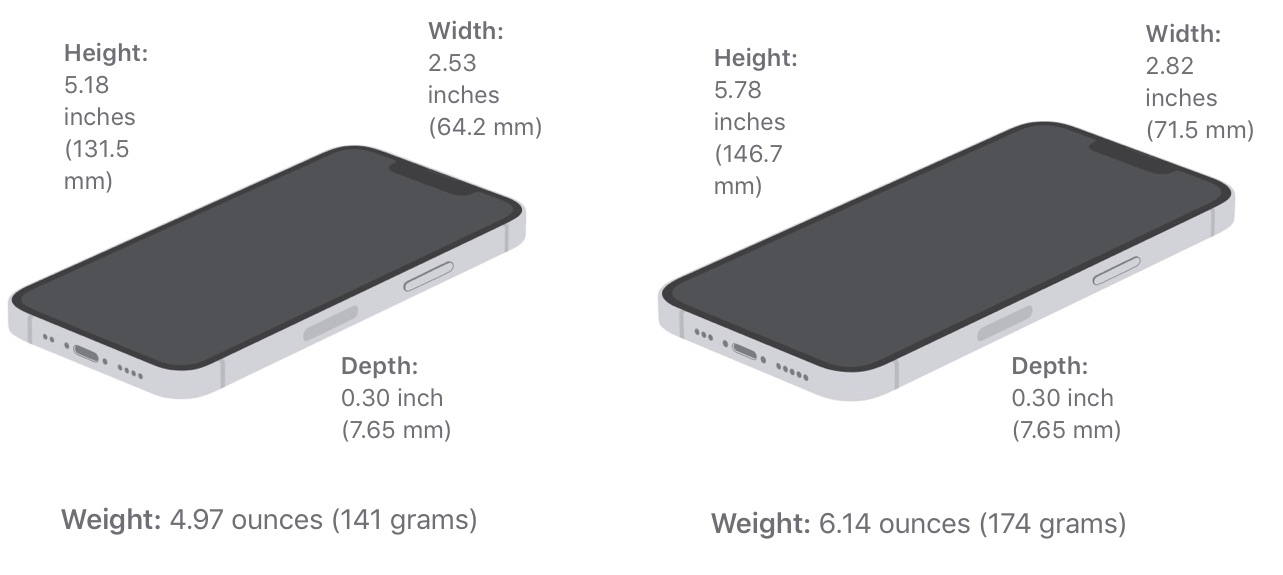
The OLED Super Retina XDR display, which is flexible and stretches completely into each iPhone 13 model’s chassis, is shared by all of the phone’s variants. For darker blacks and brighter whites, there is a contrast ratio of 2,000,000:1, and HDR pictures, videos, TV programs, and movies may have a peak brightness of up to 1200 nits. The ordinary iPhone 13 models typically have a maximum brightness of 800 nits, which is 200 nits less than the Pro variants.
The resolution of the 5.4-inch iPhone 13 small is 2340×1080 at 476 pixels per inch, while the resolution of the 6.1-inch iPhone 13 is 2532 x 1170 at 460 pixels per inch. Wide color support creates vibrant, true-to-life colors, and True Tone adjusts the display’s white balance to the surrounding illumination for an eye-friendly viewing experience similar to that of reading on paper. A fingerprint-repellent oleophobic coating and support for Haptic Touch, which gives haptic feedback while manipulating the display, are also included.
Smaller Notch
The TrueDepth camera technology is housed in a notch that has been narrowed by Apple and is now 20% smaller than in earlier iPhone models. Comparisons between the iPhone 12 and iPhone 13 models have shown that although the new notch is narrower than the previous one, it is somewhat higher.
Ceramic Shield
For the iPhone 13 models, Apple is still using the “Ceramic Shield” material, which offers superior drop protection. Nano-ceramic crystals are infused into the glass to create the Ceramic Shield display cover. To maximize clarity while keeping robustness, ceramic crystals were modified for the display, which was developed in collaboration with Corning.
Apple claims that Ceramic Shield is more resistant to scratches and daily wear and tear than any smartphone glass, thanks to a dual-ion exchange mechanism. The same Ceramic Shield display and glass body are used in both the iPhone 13 and iPhone 12 models, therefore drop testing has not shown any differences in the durability of the two devices.
A15 Bionic Chip

Apple’s new A15 processor, which delivers performance and efficiency enhancements over the A14 chip used in the iPhone 12, is utilized in all iPhone 13 variants. The A15 CPU included in the iPhone 13 models has two performance cores and four efficiency cores, and it is only topped by the A15 chip found in the iPhone 13 Pro models. The iPhone 13 Pro and Pro Max’s A15 processor has five GPU cores, whereas the iPhone 13 and 13 mini’s A15 chip has four.
Due to this, the fastest GPU performance is provided by the iPhone 13 Pro and Pro Max, however, the normal iPhone 13 models aren’t far behind. In comparison to the iPhone 12 Pro models, the iPhone 13 Pro models execute graphics 50% quicker, while the iPhone 13 models perform graphics 15% faster.
The CPU speed of the iPhone 13 models is around 10% quicker for single-core tasks and about 18% faster for multi-core tasks when compared to the iPhone 12 models. AnandTech’s testing reveals that the A15 is 62 percent quicker than comparable devices and even faster than Apple’s own predictions.
Neural Engine
Cinematic Mode and Smart HDR 4 are two of the 16-core Neural Engine’s 15.8 trillion operations per second-capable capabilities.
RAM
Compared to the iPhone 13 Pro variants, the iPhone 13 models feature 2GB less RAM (4GB total). The iPhone 12 and iPhone 12 Pro models both have 4GB and 6GB RAM, respectively, and RAM has not changed between the iPhone 12 and iPhone 13.
Storage Space
The iPhone 13 and iPhone 13 mini may be bought with up to 512GB of storage capacity, and all iPhone 13 models come standard with 128GB of storage. The iPhone 13 Pro variants have up to 1TB of storage capacity, which is half of this amount.
TrueDepth Camera and Face ID

The iPhone 13 models employ Face ID, a face recognition technology that was initially unveiled in 2017, for biometric identification reasons. The TrueDepth camera system in the display notch, which is smaller this year, houses the Face ID components. iOS uses Face ID for a variety of activities, including unlocking the iPhone, granting access to passcode-protected third-party applications, verifying in-app purchases, and validating Apple Pay transactions. A system of sensors and cameras enables Face ID.
An infrared camera reads the 3D facial scan made by a Dot Projector, which throws more than 30,000 invisible infrared dots onto the skin’s surface to record the contours of each face. The A15 chip receives the face depth map, which is subsequently converted into a mathematical model that the iPhone utilizes for identification verification. Face ID works with hats, beards, glasses, sunglasses, scarves, and other accouterments that partly occlude the face in low light and the dark.
Using Face ID With a Mask
Users may activate the “Unlock with Apple Watch” function while using a face mask for convenience. When wearing a mask, iPhone owners may unlock their device by using an unlocked, authorized Apple Watch thanks to the feature called “Unlock with Apple Watch.” It cannot be used to unlock applications that need a Face ID scan, authenticate Apple Pay or App Store transactions, or access Apple Pay accounts.
Apple made it possible for Face ID to operate with face masks in iOS 15.4 without requiring an Apple Watch for verification. According to Apple, the feature can “recognize the distinctive characteristics surrounding the eye” for verification. Face ID will then be able to unlock your iPhone even if you’re wearing a mask if you choose to activate this function during setup; however, you will need to rescan your face for Face ID.
Face ID is “most accurate” when used for full-face recognition exclusively, Apple says in the Settings app. Face ID with a mask requires that you look at your smartphone for it to unlock, and it is ineffective while you are wearing sunglasses. Unlike the previous Apple Watch Face ID functionality, Face ID with a mask may validate Apple Pay payments and be used in place of a login and password in applications that support Face ID.
How to Use Face ID While Wearing a Mask and What You Should Know How to Configure Face ID With a Mask on iOS 15.4 Only iPhone models 12 and later are compatible with the new functionality. The beta version of iOS 15.4 has not yet been made widely available to the public.
Features of Front-Facing Cameras
The 12-megapixel f/2.2 camera in the TrueDepth camera system not only powers face recognition but also functions as a front-facing selfie and FaceTime camera with many of the same capabilities as the rear-facing camera.
Many of the photographic features offered by the rear cameras are supported by the A15 chip in the iPhone 13 models, including Night mode for selfies, Smart HDR 4, Dolby Vision HDR recording, Deep Fusion, along with ProRes and the new Cinematic Mode for recording videos with depth-of-field changes akin to those found in movies.
Supported features include 4K video recording, QuickTake, Slo-mo, Portrait Mode, Portrait Lighting, and the new Photographic Styles function for making adjustments only to certain parts of an image.
Dual-Lens Rear Camera
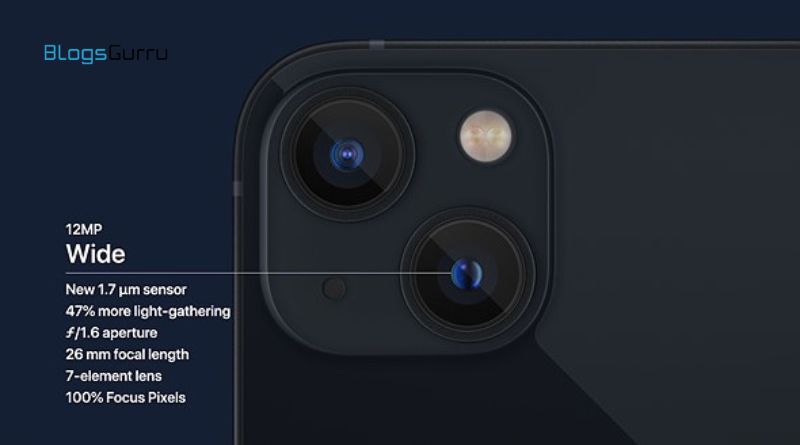
A diagonal dual-lens camera system is included on the iPhone 13 and 13 mini. The Ultra Wide lens has an f/2.4 aperture, whilst the Wide lens has an f/1.6 aperture. The upgraded Wide camera admits 47% more light, while the improved Ultra Wide camera performs better in low light. The iPhone 13 and 13 mini are only capable of 2x optical zoom out and 5x digital zoom since they lack telephoto lenses.
Camera attributes
- Up to four persons may be identified by Smart HDR 4, which then adjusts contrast, lighting, and even skin tones for each individual so that they all seem their best.
- Photographic Styles: Photographic Styles are clever, programmable filters that allow you to amplify or mute colors without changing the tone of your skin. In contrast to filters, which are applied uniformly to a picture, styles are applied selectively.
- Vibrant (boosts colors), Rich Contrast (darker shadows and deeper hues), Warm (accentuates golden undertones), or Cool are some examples of photographic styles (accentuates blue undertones). You can achieve the precise appearance you desire since Tone and Warmth may be adjusted for each style.
- Night Mode enables shooting in very low illumination conditions by taking a sequence of photographs over a short period and combining them.
- Deep Fusion – Enhances texture and detail in images in situations of moderate to low lighting.
- Portrait Mode – Blurs the backdrop while keeping the subject of the shot in focus.
- Portrait Lighting: This feature modifies the lighting in portrait mode images using the Natural, Studio, Contour, Stage, Stage Mono, and High-Key Mono effects.
- True Tone flash: This built-in flash is designed to match ambient lighting so that when it is utilized, the photo’s white balance is not affected.
- Up to 63-megapixel panorama, photos may be taken with this feature.
- Burst mode enables the simultaneous shooting of many photos, which is useful for high-action photographs.
Video Recording
The iPhone 13 models feature HDR video recording with Dolby Vision at 4K up to 60 frames per second and up to 4K video recording at 24, 25, 30, and 60 frames per second. There are options for filming videos in 720p and 1080p. When recording video, there is a new Cinematic Mode that leverages rack focus to smoothly change the emphasis from one topic to another. The backdrop is blurred while the topic is kept in focus, and the focus may be changed automatically as soon as a new subject enters the frame.
After the video has been captured, blur and focus may also be changed using the Photos app. Cinematic Mode is enhanced in iOS 16 and supports Dolby Vision HDR. It works with Wide, Telephoto, and TrueDepth cameras. Additional video capabilities include QuickTake video, audio zoom, Time-lapse, Night Mode Time-lapse, Continuous Autofocus Mode, 3x Digital Zoom, and the option to capture 8-megapixel still images while recording 4K video.
Battery Life
With the A15 processor and higher battery capacity, Apple has increased battery life throughout the whole iPhone 13 family. The battery life of the iPhone 13 mini is up to 1.5 hours longer than that of the iPhone 12 mini, while the battery life of the iPhone is up to 2.5 hours longer than that of the iPhone 12. Up to 17 hours of video playing (or 13 hours while streaming) and up to 55 hours of audio playback are supported by the iPhone 13 mini.
The iPhone 13 offers up to 75 hours of music playback and up to 19 hours of streaming video playback. The iPhone 13’s battery capacity has increased from 2,815 mAh in the iPhone 12 to 3,227 mAh, while the iPhone 13 mini’s battery capacity has increased from 2,227 mAh to 2,406 mAh. With the aid of a Lightning to USB-C connector and a 20W power converter, both iPhone 13 models can be charged to 50% capacity in less than 30 minutes.
5G Connectivity
In addition to LTE networks, the iPhone 13 models enable 5G networks. The devices’ 5G modems support both mmWave and Sub-6GHz 5G, the two forms of 5G, however, mmWave speeds are still only available in the United States.
The fastest 5G networks are mmWave networks, however, they are confined to big cities and metropolitan regions, along with events like concerts, airports, and other locations where a lot of people gather since they are short-range and may be blocked by buildings, trees, and other obstructions. In urban, suburban, and rural locations throughout the United States and other nations, sub-6GHz 5G is increasingly prevalent and accessible.
Sub-6GHz 5G is typically quicker than LTE, but it’s still under development and isn’t the very speedy 5G you may be anticipated when you use a 5G network. Faster download and upload rates made possible by 5G connection speed up everything from website loading to TV programs and movie downloads.
Additionally, it improves FaceTime call quality and expands bandwidth for streaming services so you can watch in a better resolution. FaceTime calls a function in 1080p over WiFi or 5G. 5G releases bandwidth and lessens congestion for quicker use rates in locations where LTE speeds are poor due to the sheer quantity of people.
5G Bands
- In the US, more than 20 5G bands are supported by iPhone 13 models.
- 5G NR at sub-6GHz (Bands n1, n2, n3, n5, n7, n8, n12, n20, n25, n28, n29, n30, n38, n40, n41, n48, n66, n71, n77, n78, and n79)
- 5G NR mmWave, mmWave (Bands n258, n260, n261)
LTE Bands
Gigabit LTE with 4×4 MIMO is also supported by the iPhone 13 models in addition to 5G, allowing you to connect to LTE networks when 5G networks aren’t accessible. The bands listed below are supported:
- FDD-LTE (Bands 1, 2, 3, 4, 5, 7, 8, 11, 12, 13, 14, 17, 18, 19, 20, 21, 25, 26, 28, 29, 30, 32, 66, 71) (Bands 1, 2, 3, 4, 5, 7, 8, 11, 12, 13, 14, 17, 18, 19, 20, 21, 25, 26, 28, 29, 30, 32, 66, 71)
- TD-LTE (Bands 34, 38, 39, 40, 41, 42, 46, 48) (Bands 34, 38, 39, 40, 41, 42, 46, 48)
Data Saver Mode
When 5G speeds are not required to maintain battery life, the Data Saver Mode function switches the iPhone’s connection to LTE. For instance, the iPhone utilizes LTE while updating in the background since very high connections are not required, but the iPhone 13 models switch to 5G when downloading. Show because speed is an important factor. There is an option to switch off the automated Data Saver Mode and utilize 5G whenever it is available.
Dual SIM Support
With dual SIM capability, two phone numbers may be used simultaneously thanks to the combination of an eSIM and a real nano-SIM slot. Many nations throughout the globe have eSIM capabilities, and Apple’s website has a list of carriers that accept eSIM. The iPhone 13 models are the first to offer dual eSIM, which allows users to utilize two eSIMs at once as opposed to simply one eSIM and one nano-SIM. This year, Apple’s iPhone 13 models associated with a carrier will not come with a physical SIM card; instead, carriers will activate these devices using eSIM technology.
Bluetooth, Wi-Fi, and U1
The iPhone 13 models include a U1 chip made by Apple that allows Ultra Wideband technology for better spatial awareness and enables the iPhone 13 models to accurately find other U1-equipped Apple devices. Because Ultra Wideband is intended to provide better indoor positioning and location monitoring, Apple has compared it to “GPS at the size of the living room. The iPhone 13 and 13 mini can accurately locate neighboring AirTags thanks to the U1 processor. Additionally, it’s utilized to interface with the HomePod mini, which also includes a U1 chip, and for directional AirDrop. The iPhone 13 variants feature Bluetooth 5.0 and Wi-Fi 6 respectively (802.11ax).
Other Qualities
Speakers
- The stereo speakers on the iPhone 13 models are placed at the top, close to the notch, and at the bottom, near to the Lightning connector.
Sensors
- The barometer, three-axis gyroscope, accelerometer, proximity sensor, and ambient light sensor are all features of the iPhone 13 models.
NFC and GPS
Location services including GPS, GLONASS, Galileo, QZSS, and BeiDou are supported by the iPhone 13 and 13 mini. The iPhone models support NFC with reader mode and include a background tag function that enables NFC tag scanning without opening an app first.
MagSafe
The MagSafe charger and other magnetic accessories are connected by a magnetic ring that is a part of the built-in MagSafe technology that is still available in the iPhone 13 series. The 15W MagSafe charger, which is faster than the 7.5W wireless charging offered by Qi-based chargers, clamps neatly into the back of the iPhone 13 models. Other magnetic accessories, like cases, sleeves, snap-on wallets, and more, are compatible with the magnetic ring, and third parties may also produce accessories for the MagSafe iPhones.
Apple cautions that MagSafe Chargers may leave a circular impression on leather covers, and silicone cases have also been known to have this problem. Additionally, according to Apple, nothing should be inserted between the iPhone and the MagSafe charger save for a keychain. The iPhone 13 models’ MagSafe feature, like that of other iPhones, may interfere with medical equipment like pacemakers and defibrillators. Apple advises keeping implanted medical devices a safe distance away from MagSafe iPhones and any MagSafe accessories.
iPhone 13 How Tos
13 Pro and 13 Pro Max iPhones
The high-end flagship smartphones of this year, the iPhone 13 Pro and Pro Max are being marketed alongside the iPhone 13 and 13 small. The Pro versions are superior to the iPhone 13 and 13 minis in terms of build quality and provide capabilities that aren’t offered by the less expensive iPhones.
The iPhone 13 Pro and Pro Max have upgraded Wide, Ultra Wide, and Telephoto lenses, triple-lens camera systems, higher-end photography options like macro photography, and the ProRes video format compared to the standard iPhone models. They also have a stainless steel frame, 120Hz ProMotion displays, and better Wide, Ultra Wide, and Telephoto lenses.
You’re having trouble choosing between the iPhone 13 and iPhone 13 Pro. If you want to upgrade from the iPhone 12, there is a tutorial for that as well. We have a separate iPhone 13 vs. iPhone 13 Pro guide that outlines the similarities and differences. We also have a special iPhone 13 roundup that goes over all the features if you want to learn more about the iPhone 13 Pro versions.
Upcoming iPhones

The iPhone 14 will replace the iPhone 13 models, and there are already speculations circulating regarding the 2022 variants. Apple is anticipated to abandon the notch for at least some models, switching to a front-facing camera with a hole in it and implementing Face ID underneath the display. The iPhone 14 models could also sport a fresh aesthetic that does away with the camera hump and, for the first time in many years, adopts a flush camera design. We have a special iPhone 14 roundup with further information on what to anticipate from the device.
iphone 14
iPhones from Apple featuring A15 processors, lower notches, and upgraded cameras for 2021. Along with the iPhone 14, it’s discounted.
Features
- sizes 5.4 and 6.1 inches
- comparable to the iPhone 12 lineup
- a narrower notch
- new shades
- enhancements to cameras
- Bionic Chip A15
- 5G

